Why you can trust Tom's Hardware
Meet the XFX RX 6600 Speedster SWFT 210
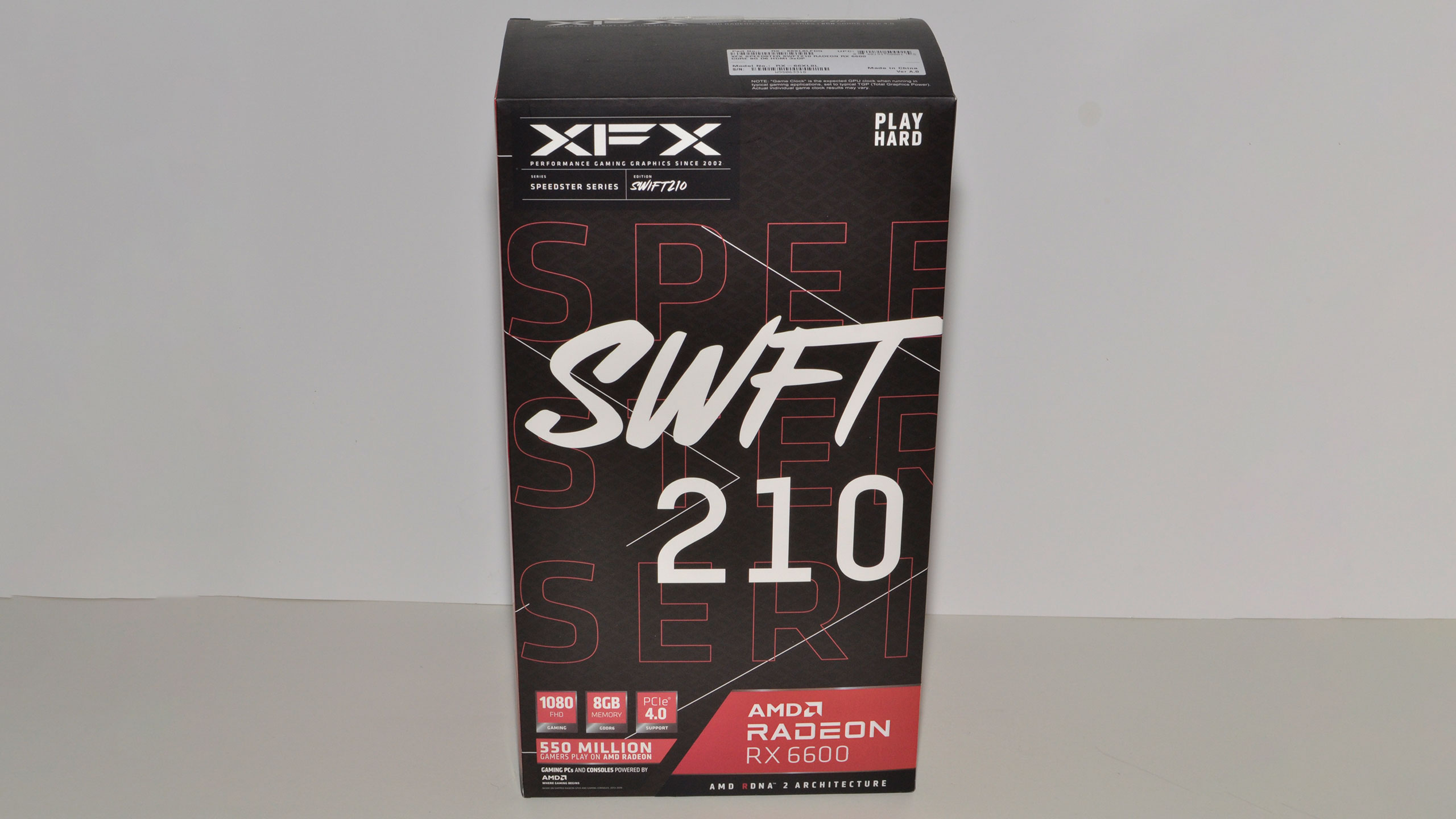
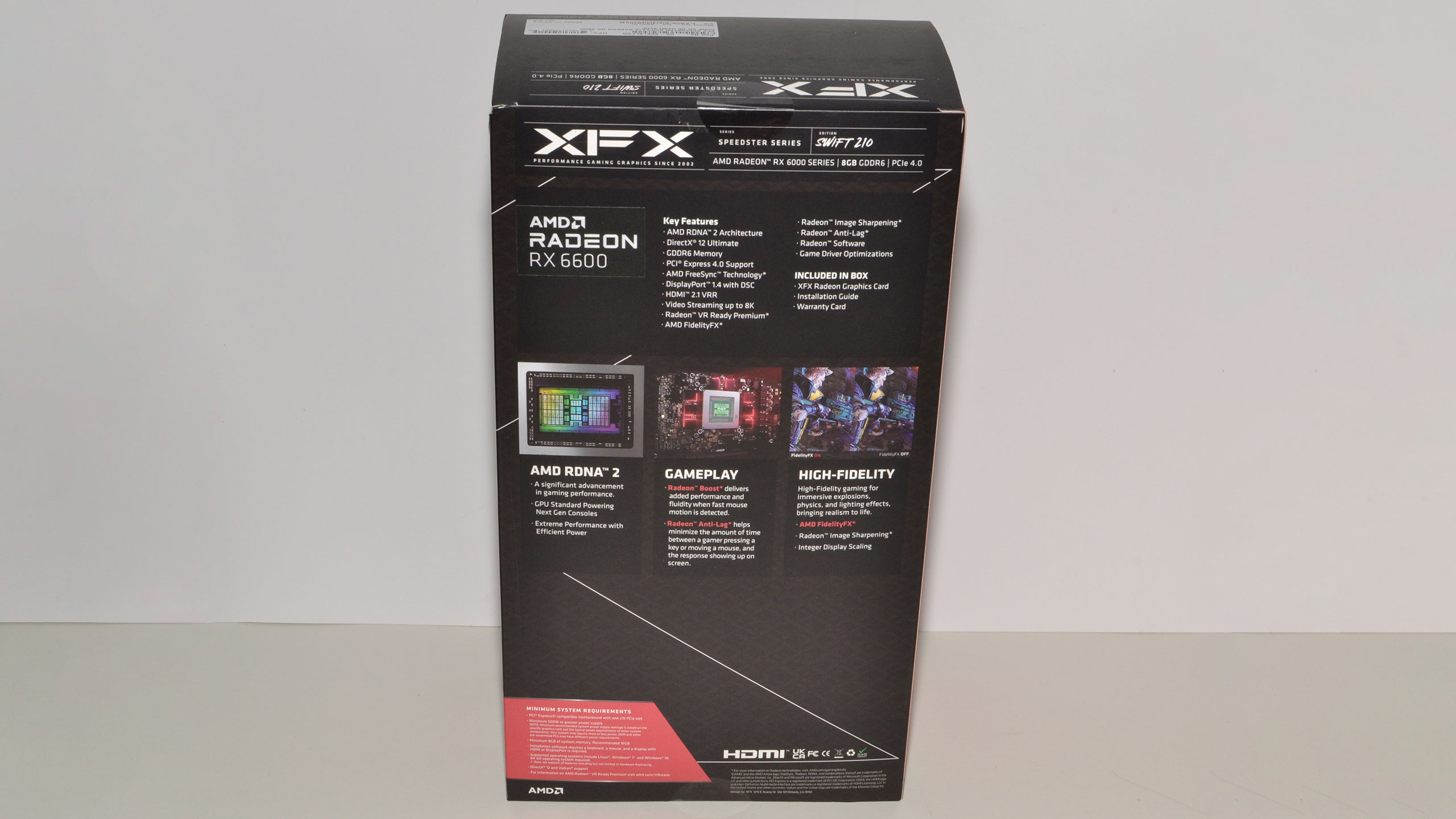
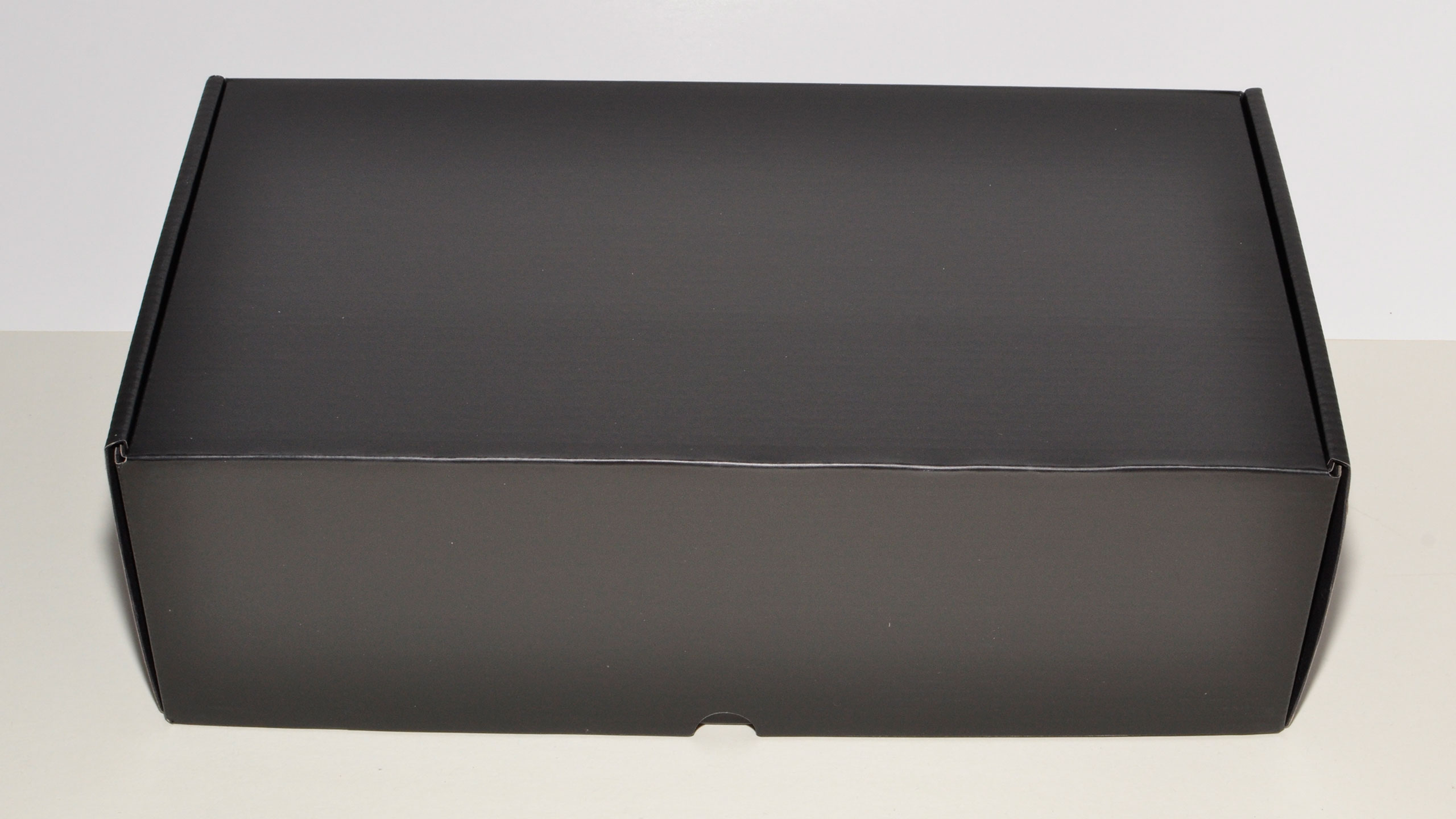


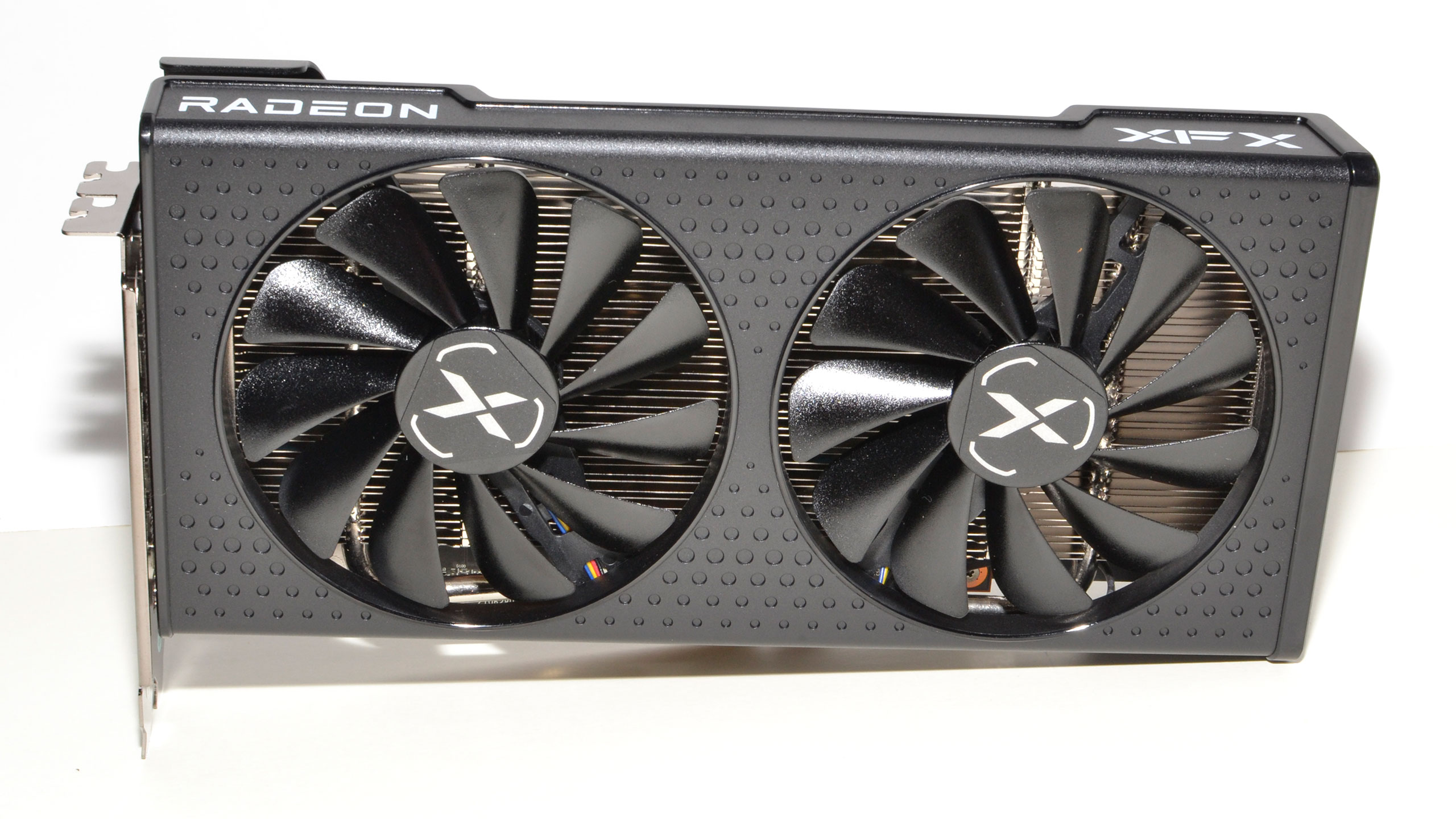


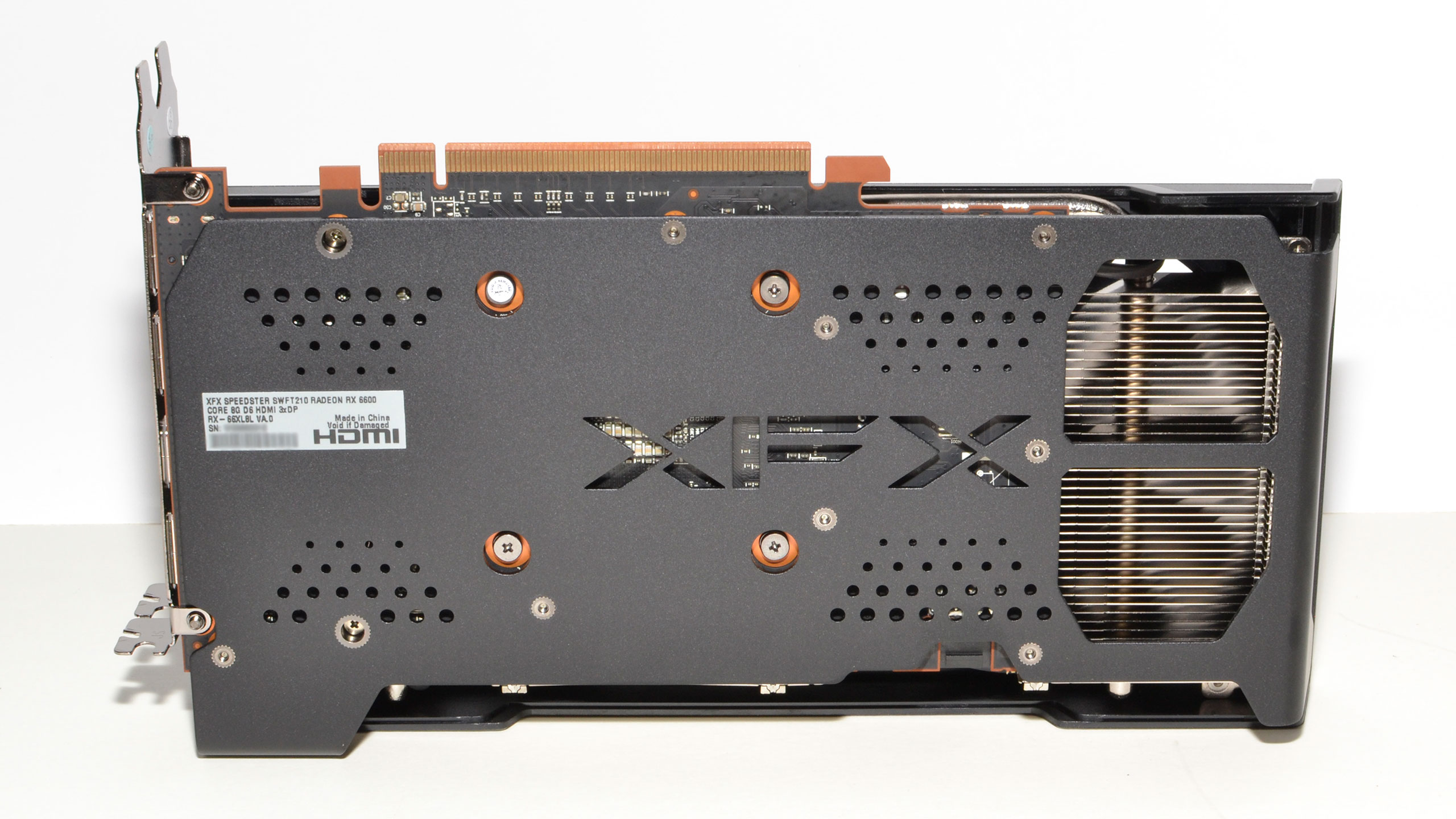
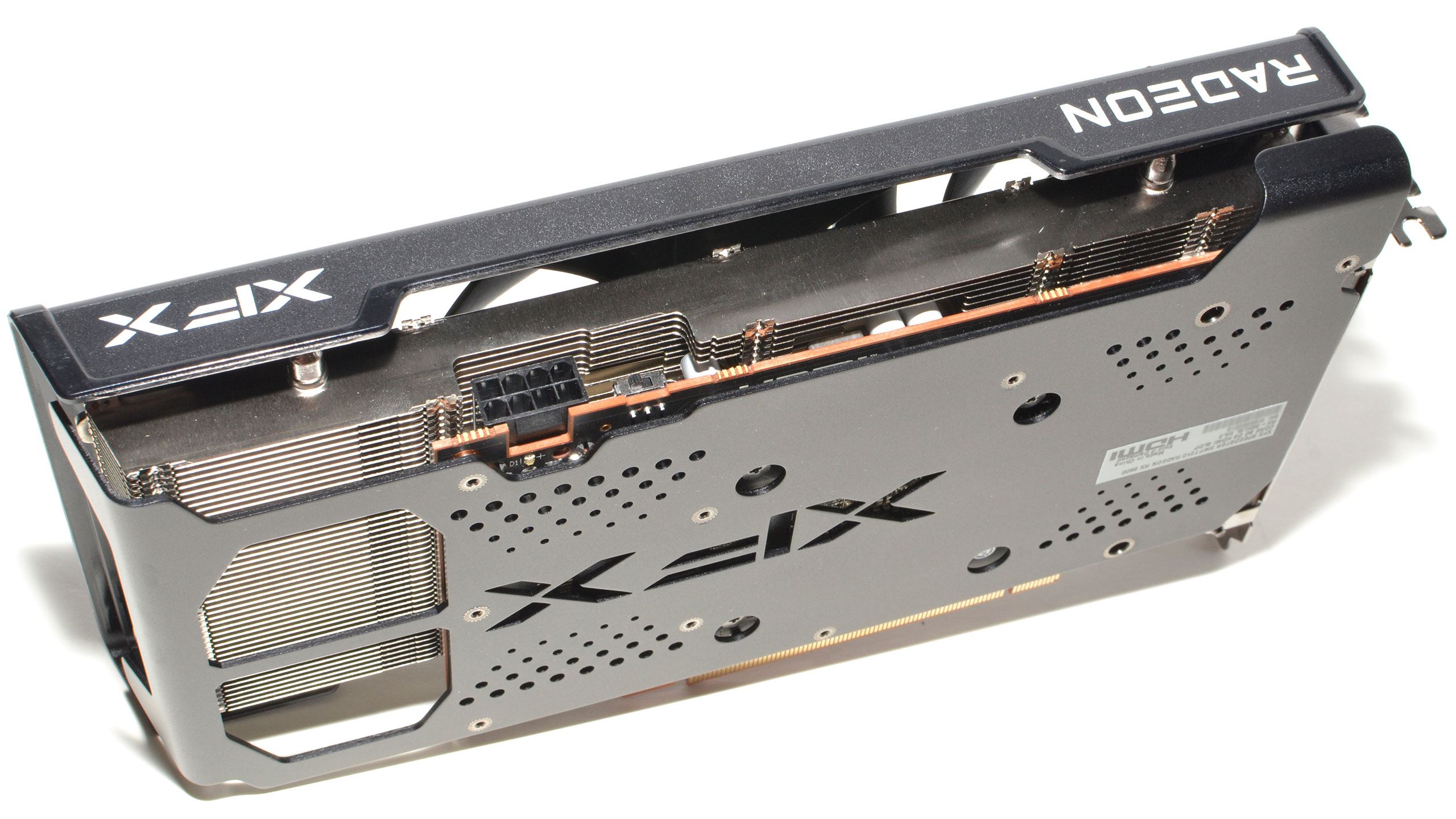
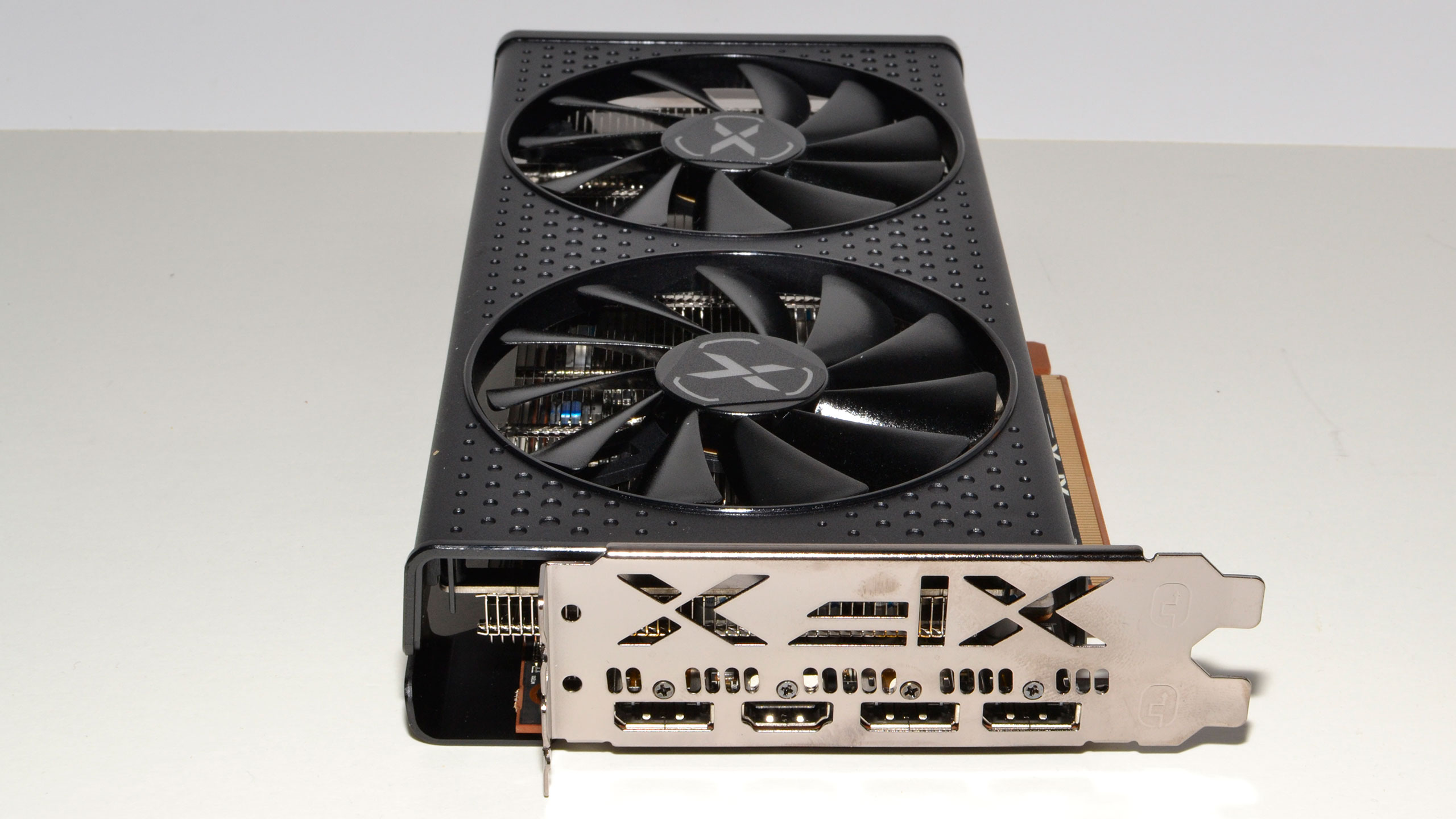
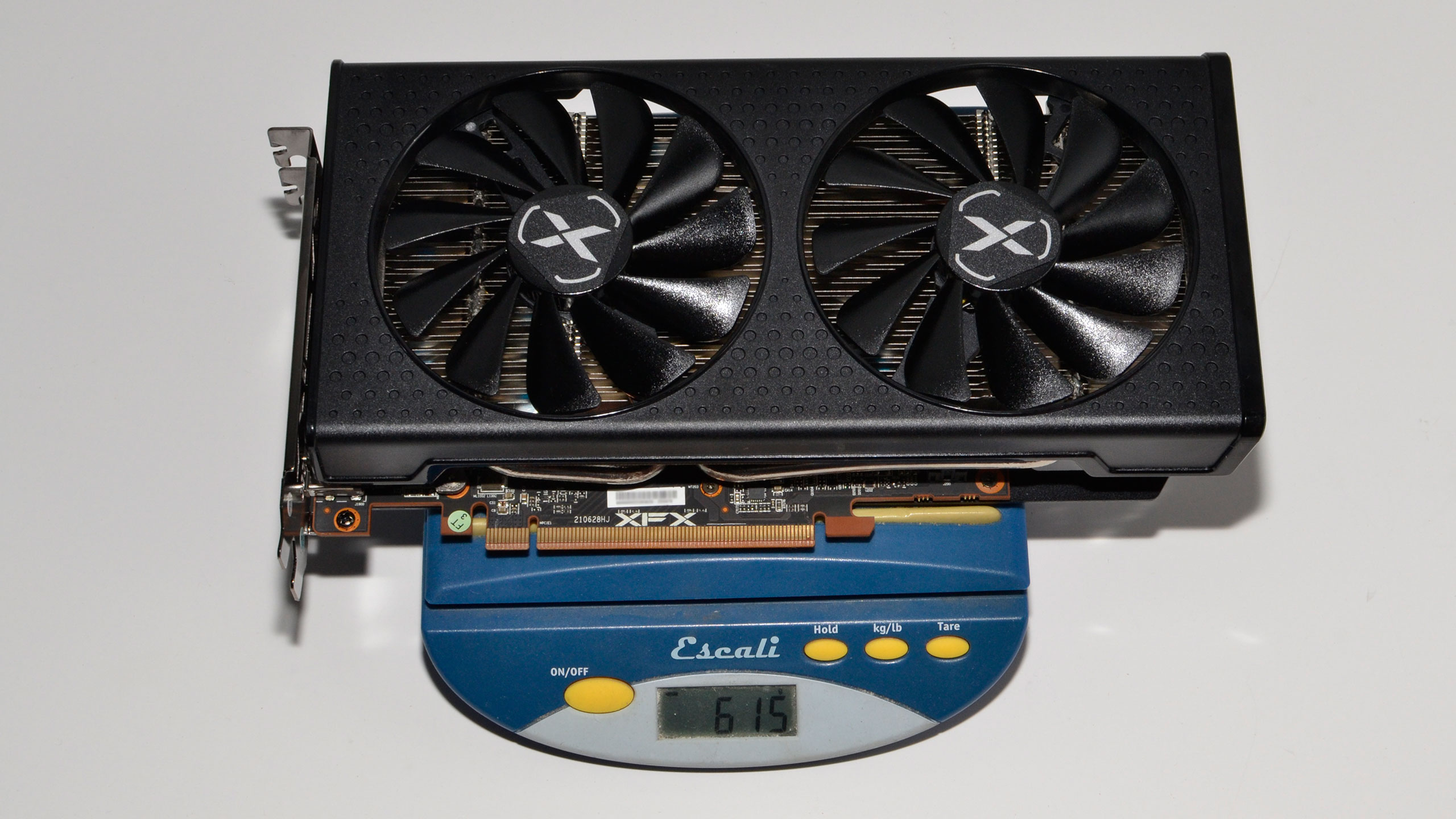
The Radeon RX 6600 will only be available from AMD's add-in board (AIB) partners. For the launch review, AMD sent us the XFX Radeon RX 6600 SWFT 210. We don't see a lot of XFX cards for review, though we've tested various models in the past. XFX is a tier-two graphics card manufacturer, basically the AMD GPU equivalent of a Zotac card. We can't say much about their support, but in general we'd expect the larger brands like Asus, ASRock, Gigabyte, MSI, and Sapphire to be more readily available at retail.
AMD's Radeon Software reports a maximum boost clock of 2704MHz, but what the software says and what the official specs say doesn't usually match up — different ways of reporting boost, basically. The official boost clock for the card is 2491MHz, and that's pretty close to what we saw in our power and temperature testing later on. We're told that all the cards AMD sampled reviewers have the same game and boost clocks, so as far as we know this is as close as we'll get to a 'reference' design.
The XFX RX 6600 SWFT has a relatively compact design, which you'd expect from something with a 132W TDP rating. It's a dual-slot card that measures 243x114x39 mm and weighs 615g, a featherweight compared to some of the chunkier graphics cards we've tested. The card's equipped with two custom fans, both 95mm in diameter. The fans are unremarkable, meaning they should get the job done but they're not high static pressure designs and don't feature integrated rims.
Aesthetically, this card defines barebones. There's no RGB lighting, or any lighting at all. Some will appreciate that fact, but fans of bling will want to look for other options. Video ports consist of three DisplayPort 1.4 and one HDMI 2.1 outputs. There's a single 8-pin power connector, more than enough for the card's needs. There's also a toggle switch that appears to swap between two VBIOS chips — it's not labeled but the manual says, "If your card comes equipped with a dual BIOS…"
Speaking of the manual, the small pamphlet doesn't tell you much. It's a generic pamphlet that's apparently for all XFX graphics cards, not for this specific model. For most users, that's not important, but including a digital file that's specific to the card model would be better. Like I was saying, though, this is a very barebones card and packaging, and I'd assume it's one of the $329 models that will go on sale today.
Test Setup for Radeon RX 6600
Our test hardware hasn't changed (yet… waiting for either Alder Lake or Zen 4 before making the switch and retesting everything). We're still running Windows 10 (21H1, build 19043.1237). We're also using motherboard BIOS version 7B12v1B1, which includes beta resizable BAR support (aka, 'ReBAR'). We tested the RX 6600 XT on both AMD Ryzen 5900X and Intel Core i9-9900K system, but the differences were generally small so we'll confine our testing to just the usual Intel PC this time. We did notice that the x8 PCIe Gen4 connection on Navi 23 does seem to hinder performance a bit, so you can probably eke out a bit better performance with a more recent platform that supports PCIe Gen4.
We're sticking with the same 13 games we've been using since the RTX 3080 launch, all with DXR (DirectX Raytracing) disabled. We have a second test suite that includes DXR in ten games (plus we've also tested Far Cry 6, with and without DXR) for those curious about how the RX 6600 holds up with maxed out graphics settings and ray tracing. This card definitely isn't built for that sort of workload, unless maybe you're running at 1280x720, but we gave it a shot anyway. We're also skipping the FSR and DLSS testing for this review, as we've covered that elsewhere in the past and things haven't really changed.
We're also getting ready to revamp our test suite that we use for both the GPU benchmarks hierarchy as well as individual graphics card reviews. Many of the games are several years old, and frankly testing 24 different games at various settings is a bit much. This will very likely be the last new GPU launched in 2021, unless Nvidia decides to finally trot out RTX 3050 desktop cards, so at least that should give us a chance to retest everything for the new suite — using Windows 11 and potentially a new CPU platform, if all goes to plan.
For now, we've trimmed down the charts to only show ten more or less comparable GPUs. We have a mix depending on which set of charts — medium, ultra, or ray tracing — that you're looking at, but the full set of results will also be available on our GPU benchmarks hierarchy and best graphics cards guides soon.
If you have any suggestions on games you'd like to see included in our updated suite, feel free to let me know in the comments. I want to keep the total under ten, if possible, but I do want a broad selection of genres, as well as both AMD and Nvidia promoted games. And with that out of the way, let's hit the benchmarks.
Get Tom's Hardware's best news and in-depth reviews, straight to your inbox.
Current page: XFX RX 6600 Speedster SWFT 210 and Test Setup
Prev Page AMD Radeon RX 6600 Review Introduction Next Page Radeon RX 6600 1080p Gaming Performance
Jarred Walton is a senior editor at Tom's Hardware focusing on everything GPU. He has been working as a tech journalist since 2004, writing for AnandTech, Maximum PC, and PC Gamer. From the first S3 Virge '3D decelerators' to today's GPUs, Jarred keeps up with all the latest graphics trends and is the one to ask about game performance.
-
Zarax Hi Jarred, would you suggest this card as an upgrade from a RX590 in an older PC (i7-3770k)?Reply
Thanks! -
kal326 Says these launch the 21st. Newegg shuffle hit early today and lists 8 rx6600 cards from ASRock, XFX, Gigabyte, MSI, Powercolor and Sapphire. They seems lower priced at the $329 level and I noticed they were non XT with first listing day of today.Reply -
King_V Reply
Not that I want to speak for Jarred, but the RX 6600, being somewhere in the same performance range as the RX 5600 XT or the RX 5700, would be a very noticeable jump from the RX 590, while also consuming a lot less power.Zarax said:Hi Jarred, would you suggest this card as an upgrade from a RX590 in an older PC (i7-3770k)?
Thanks!
That said, on that old i7, I think the only real problem would be possibly the motherboard. Sometimes, older motherboards are very finicky and won't work with newer video cards, most particularly when they're part of OEM systems like Dell and HP. -
-Fran- Ah, another "meh" release of a GPU. Only saving grace is going to be the real street pricing vs MSRP. So sad... So sad...Reply
Anyway, thanks a lot for the review; much appreciated as always.
Wasn't the Z77 chipset PCIe2.0? It would make the 6600 siblings run in X8 of PCIe2, so I'd imagine they won't perform as in these charts? Maybe close, but I wonder how badly they'll be constrained.King_V said:Not that I want to speak for Jarred, but the RX 6600, being somewhere in the same performance range as the RX 5600 XT or the RX 5700, would be a very noticeable jump from the RX 590, while also consuming a lot less power.
That said, on that old i7, I think the only real problem would be possibly the motherboard. Sometimes, older motherboards are very finicky and won't work with newer video cards, most particularly when they're part of OEM systems like Dell and HP.
EDIT: yep, 2.0 indeed: https://ark.intel.com/content/www/us/en/ark/products/64024/intel-z77-express-chipset.htmlEDIT2: Z77 with the 3770 does run in PCIe3.0; just want to clear that up just in case. It was pointed out later in the thread.
Regards. -
Zarax ReplyKing_V said:Not that I want to speak for Jarred, but the RX 6600, being somewhere in the same performance range as the RX 5600 XT or the RX 5700, would be a very noticeable jump from the RX 590, while also consuming a lot less power.
That said, on that old i7, I think the only real problem would be possibly the motherboard. Sometimes, older motherboards are very finicky and won't work with newer video cards, most particularly when they're part of OEM systems like Dell and HP.
Luckily it's not a branded PC but a custom build.
In my case I would use the RX590 to replace my wife's HD7970 and get the RX6600 for myself IF I can get it at MSRP. If not, I will keep playing lottery at AMD's website in the hope of getting something realistically priced. -
PiranhaTech When AMD misses the mark, they often have price adjustments and/or sales eventually... but they probably don't need to in this climate.Reply -
King_V @Yuka 's post does bring up a good point, though. That the 6600 is constrained to x8 PCIe, and that early era board you have is running PCIe 2.0, could make the 6600 a little slower than expected.Reply
I still imagine it'll do far better than the RX 590, though. -
Makaveli ReplyZarax said:Hi Jarred, would you suggest this card as an upgrade from a RX590 in an older PC (i7-3770k)?
Thanks!
As someone who is on a RX580 I think it would be better to go with the 6600XT model, but as other have suggested if you don't have a PCIe 4.0 motherboard makes this a more difficult decision. -
King_V Yeah . . I think even on PCIe 3.0, you'd still be okay. PCIe 2.0, on the other hand, is kind of an unknown in terms of how much of a choke-point that will be.Reply -
InvalidError Reply
Doesn't matter what the chipset is: the x16 slot is fed directly by the CPU and Ivy Bridge (3000-series) does support PCIe 3.0. Most 60-series boards with a hard-wired x16 slot (no x8x8/x8x4x4 bifurcation since 2.0 switches can't do 3.0) also got a free upgrade to 3.0x16 with an Ivy Bridge CPU installed.Yuka said:Wasn't the Z77 chipset PCIe2.0?
Kind of the reverse of how a lot of 300/400-series AM4 motherboard could do PCIe 4.0 when using a Zen 2 CPU until AMD pushed an AGESA update to block it.
As for the review/RX6600 itself, basically feels like overpriced tech from years ago. MSRP is about $100 more than it would have any right to in a remotely sane economy.